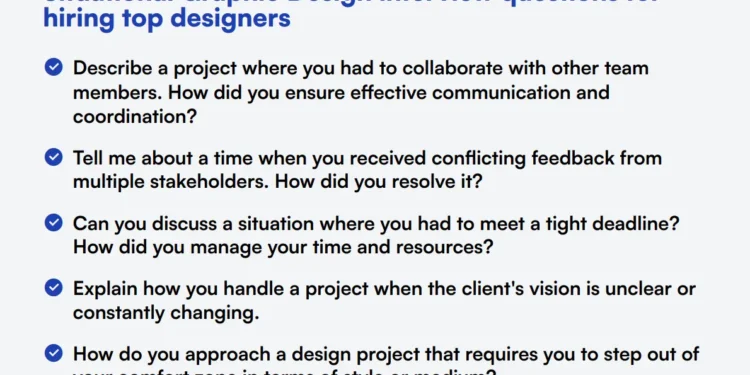The process of marketing and branding your business requires a holistic approach, but many people overlook the importance of graphic design.
A good graphic design can make all the difference in how your audience perceives your brand. It can help you convey the values and messages that are essential to engaging with your audience.
In this article, we’re going to show you how to create a brand identity using graphic design elements like fonts, color schemes, logos, and more.
First things first: what is a brand identity? Simply put, it’s all the visual components that make up your brand. Think of it as “what your company looks like”—from its logo and social media profile pictures to its website design and product packaging. The purpose of creating a brand identity is so that everything that your customers come into contact with reinforces your core messaging in an effortless way.
Graphic design is an essential part of marketing, web development, and other business operations. Here are some frequently asked questions about graphic design, why it’s important to outsource design projects, and what it’s like to work with graphic designers:
Why is graphic design so important?
Graphic design is a critical component of any business strategy. It’s the visual language that communicates your brand and helps you stand out from your competitors.
What are some of the benefits of hiring a designer?
The benefits of hiring a graphic designer include:
– client satisfaction – you can trust that your project will be handled professionally by someone who understands the industry you operate in – no matter where or how far away you live;
– flexibility – if something comes up during the course of your project that needs immediate attention, your designer can help you solve it;
– quality control – when you hire only one person to do all of your designs, they can focus on quality control rather than trying to please everyone at once;
– time savings – having someone else handle all aspects of your projects means less time spent on administrative tasks like emailing invoices, etc.;
– saving money on advertising costs since most designers
1. When you think of graphic design, what comes to mind?

Graphic design is the process of designing and arranging visual elements to create a message.
Designviva provides both web and print graphic design services, as well as logo design and branding. We have experience with everything from logos to websites, brochures, advertisements, and more!
The process of graphic design has all the phases of the creative process: exploration, ideation, conceptualization, information gathering, production, and feedback. Graphic designers are responsible for creating visual solutions that are appropriate to customers’ needs. They also must be able to communicate effectively with their clients and other team members.
2. Where is graphic design used?
Graphic design is a creative field that involves the development of visual concepts, as well as their implementation. It is an essential part of every company’s branding strategy and marketing efforts.
Graphic designers can work in a variety of settings with many different types of clients. They may work for small organizations or large corporations; they may work independently or as part of a team; they will likely have to collaborate with other designers and art directors on projects, and they may be responsible for creating everything from logos and brochures to websites and advertisements.
3. What software do graphic designers use to create these designs?
The graphic designer is a unique breed. They’re like the Goldilocks of the design world: they’re not too hot, and they’re not too cold; they don’t use hand-illustrated designs or computer-aided designs—they use both!
With an endless range of software at their fingertips, graphic designers can create nearly any visual product you can imagine. The availability of Adobe Illustrator and Photoshop have become staples in the graphic designer’s toolbox, but there are plenty of other programs that are also useful for designing logos, websites, posters, social media graphics… pretty much anything you can think of.
Graphic designers may use hand-illustrated designs or computer-aided designs depending on the project at hand. Both methods have their strengths and weaknesses; computer-aided designs are great for creating complex shapes quickly and precisely, but hand-illustrated designs often have more character and emotion.
In today’s world, it’s important for designers to be versatile enough to use both types of methods in order to get the best results on any given project.
4. What can a graphic designer do that would surprise you?
You see them everywhere: ads, movie posters, web pages, and even in your nightmares. Graphic designers are the unsung heroes of the marketing world. Without them, we’d be drowning in a sea of boring marketing materials that all look like they were designed by the same person.
Graphic designers use their creative skills and knowledge of design principles to make sure that whatever medium they’re working with conveys the appropriate messages and values as well as evokes an emotional response from the viewer.
If you’ve ever tried to explain the difference between a graphic designer and a web designer, you know it’s not easy. Here’s the thing: they both have their own specialties, but they also overlap in some pretty important ways.
Graphic designers are great at creating layouts for print materials—things like brochures, magazines, advertisements, and logos. They’re also good at understanding how color schemes work together and what fonts go best with different kinds of media. Web designers are great at creating websites and digital assets that look good on screens—and they can also understand the more technical aspects of design required to create those assets.
For example, a web designer is often able to create wireframes (the barebones structure of a website), workflows (the steps users take within an app), and sitemaps (a visual representation of all pages on a website). They also understand how to develop easy navigation for the user experience.
5. What else can a graphic designer do to make the world a more beautiful place?

Graphic design is more than just a pretty picture.
In fact, graphic design is the process of turning your client’s vision and brand identity into a graphic display. It’s also the process of combining words and images in a way that helps your client communicate their value proposition. And that’s just for starters. A designer will also undertake many specialty tasks as part of a graphic design project, including:
– Naming and logo creation
– Branding strategy development
– Information architecture creation and document layout design.
If you’re looking for a career as a designer, you’re in luck: there’s no shortage of things to do and places to do them.
Specialists in this field provide conceptual input, attend meetings related to the project, monitor customer clicks, and purchases, give presentations on various design options, revise designs, and prepare a variety of design assets for their teams and clients.
In this position, you’ll need to be able to work independently without supervision and have strong communication skills. You’ll also have to have excellent organizational skills so you can keep track of multiple projects at once—and be able to juggle those projects while still keeping each client happy.
6. How can I work with a graphic designer and stay within my budget?
Working with a graphic designer can be a lot of fun, but it’s important to know how to communicate with them. If you want to work with them directly, there are many options available. You could hire them directly through an agency or through a platform like Designviva.
The best way to work with your graphic designer is by being clear about what you need from them. They need to understand that they aren’t just designing graphics—they’re helping you build your brand.
When you fill out the details of your request, be as specific as possible. The more detail you give, the less likely it is that there will be a need for revisions, and therefore the less likely it will be that your project will cost more than anticipated. Most graphic designers include one or two rounds of changes in their project price.
7. How can you work most effectively with a graphic designer?
There are some things that every graphic designer should consider before proceeding with a project.
First, make sure you have done your research in terms of whether they are a good match for your project. Make sure that their style is similar to what you need, and that they have experience working with your industry or clientele.
Second, clarify the scope of the project upfront. What exactly is being designed? Is this a logo or something more complex? Also, decide how much input you want on the design process. Some designers like to work within established guidelines and will provide mock-ups for approval at certain points in the process; others may ask for more creative freedom and only present completed concepts at the end.
Third, review portfolios carefully before making a decision about which designers to hire. Look through multiple examples of their work—it will tell you everything from their design style (did they do this type of thing before?), quality level (are these finished products or just sketches), and responsiveness (how many revisions did it take?).
A successful working relationship with your freelance graphic designer often results in the best possible creative results. You and the graphic designer should strive to keep communication lines open so that you can continue to work together on future projects.







